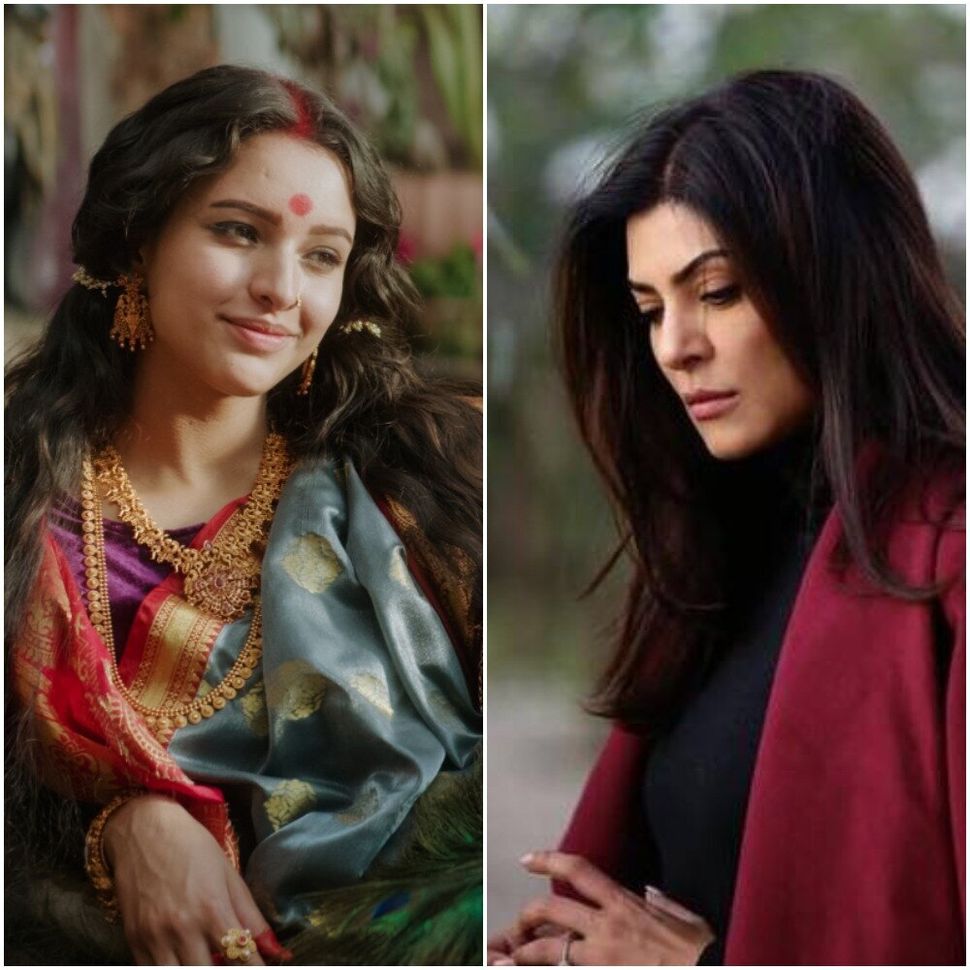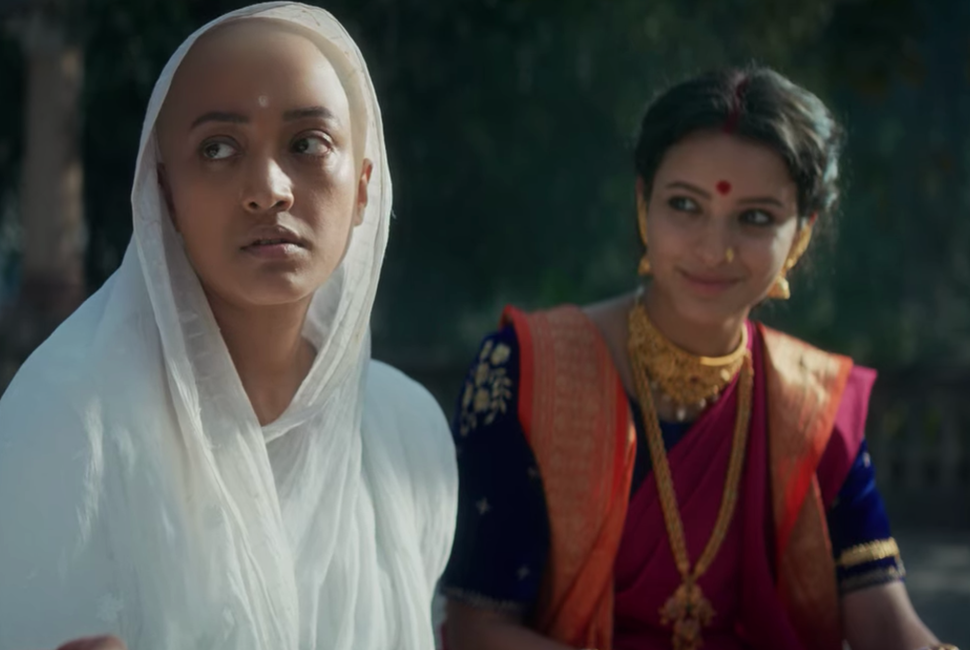
Dayamayee — a frail, quivering and feverish Sharmila Tagore— is hunched over a smattering of puja paraphernalia in the courtyard of an old Bengal mansion, with a thick, limp tuberose garland slung around her neck. A horde of women throng the staircase and pray to her with folded hands but Dayamayee, her eyes blank, shoulders drooping and mouth frozen in a stifled gasp, doesn’t blink or move. A minstrel sitting on the staircase gleefully sings, “Ebar tomai chinechi ma (I have finally recognised you, mother.)”.
As the song claiming that men have finally discovered the real ‘mother’ (referring to Dayamayee) progresses, ironically, the woman at the centre of it is steadily, painfully and almost violently losing her own identity to an unreal one the world insists on bestowing upon her. As a woman with none of Dayamayee’s compulsions, separated by fiction and a few decades, I treat Satyajit Ray’s stunning Devi (1960) as a sort of holy text on the horror of drowning in labels the world gives every average woman - slut, goddess, bitch, mother, chudail, devi. Watching Devi is like scraping a wound so that it stays raw and keeps reminding you of what caused it.
Anvita Dutt’s Bulbbul — which narrates how domestic and sexual violence are used as weapons against a woman’s personhood — is an earnest attempt to occupy a similar space in a woman viewer’s consciousness.
So when a man in Netflix’s Bulbbul benevolently screams, “Woh chudail nahin hai, devi hai devi”, I disappointedly watch the movie plunge into the good woman versus evil woman trap that it had probably set out to challenge in the first place. Why does Bulbbul have to be deified from the point of view of a man who worships her? Why does the latter have to correct another man critical of her that she is actually worthy of devotion?

Violence against women in India is often rooted in and justified by this ‘devi-chudail’ binary, both of which are built on misbegotten assumptions about women’s interests and aspirations. So how does it feel when a film which honestly aims to unpack the myths of class and faith around sexual violence resorts to the same binary to hail its woman protagonist?
The answer, ironically lies in Bulbbul’s screenplay itself. Worried about a slew of gory murders in the village, Satya, Bulbul’s young, temperamental brother-in-law, comments that it must be the work of a beast or a man.
“What, can’t she be a woman?” Bulbul smirks.
Indeed, why not?
In Ram Madhvani’s Hotstar series Aarya, a starkly different film rooted in the gritty world of the violent drug mafia, Sushmita Sen’s character is shown to be constantly straining against deification. Both Bulbbul and Aarya’s lives are fretful, nervous responses to the violence of men. Both women — Bulbbul played by Tripti Dimri and Aarya played by Sushmita Sen — respond to the violence inflicted on themselves and on their kin by assuming a role traditionally accorded to men in Hindi films, that of a protector. Bulbbul, beaten up by her husband, abandoned by her friend and the love of her life Satya (her brother-in-law), and raped by another brother-in-law, is kind of reborn like phoenix, as a ‘chudail’ who avenges tortured women by killing the perpetrators.
The deification of Bulbbul is fervent, melodramatic and almost desperate. Throughout the film, I desperately hoped writer and director Anvita Dutt would let her protagonist Bulbbul catch her breath and process her pain, before or while responding to it by avenging other women. Dutt dwells elaborately on the physicality of violence — as Bulbbul screams while her husband thrashes her with an iron rod, the scene culminates with a growing patch of blood on Rahul Bose’s kurta. The camera hovers hungrily around the gore, from the first sprinkle of blood on the mirror as Bose beats her to the collage of gleaming, red droplets that collect on his clothes. After Bulbbul is raped, the camera doggedly follows the piece of cloth Binodini — Bulbbul’s sister-in-law — uses to wipe her legs, rinsing it in a white ceramic water bath once, and then again. It lingers around Bulbul’s legs strung up, as blood seeps into the white bandages. It freezes momentarily on a thick stream of blood crawling down Bulbbul’s inner thigh. It’s effective. My 62-year-old mother who was watching Bulbbul with me gasped twice and then made a sizzling ‘sssshhhh’ sound — sucking air in while gritting her teeth — as she usually does while tending to our wounds. Here’s the thing, she’d have the same reaction if Bulbbul, say, sliced her finger with a knife. Our response to Bulbbul stems from our response to physical trauma.
“Our response to Bulbbul stems from our response to physical trauma.”
What does Bulbbul feel though? Abandoned? Afraid? Angry? Confused? Betrayed? Bulbbul asks you to be angry against male violence because of how physically devastating it is. How bone breaking, blood spilling, skin scraping it literally is. However, we all know male violence doesn’t exist in a vacuum, nor does it operate alone, proud chested, in isolation. It is insidious, gradually weaving a shroud of silence, obeisance and gratitude, following which it manifests itself in its lowest, physical form. Bulbbul is about the women, yes, but it feels like it’s being told through the eyes of the men in her life.
Which is why Aarya, which lets its protagonist breathe, is easier to fall behind. Aarya’s story begins when her husband is gunned down in the driveway of their home. In the half an hour in the episode between her husband being gunned down and eventually dying, Arya goes from being in shock, to desperation, to action that protects her family and their business interests and finally, all-consuming grief. Aarya turns the multi-tasking superwoman trope on its head to make her a tortured, afraid, yet desperately brave woman who wants to do it all, but fails frequently.

Aarya revolves around Sushmita Sen’s eponymous character, whose husband Tej runs her father’s illegal drugs trade. Tej finds out that his partners — Jawahar and his brother-in-law Sangram — have stolen a drugs shipment from a widely feared smuggler. A few days later he is killed. Like Bulbbul’s character is anchored as a protector of women, the core of Aarya’s character is her role as a mother to her three children and how she needs to protect them. In Bollywood, the temptation to turn a mother into an unreal, sacrificial superwoman is ridiculously high, but Aarya deftly avoids falling into that trap.
Bulbbul very literally transforms into a sort of light-skinned couture chudail, a serene smile adorning her blood-soaked mouth after she has killed a man, while another man gawks at her with absolute, wide-eyed devotion. On the other hand, Aarya’s transformation is painful, jittery and full of roadblocks.
Soon after Bulbbul is called a ‘devi’, the visuals construct her as a version of Kali as seen in popular imagination.
In a somewhat parallel sequence in Aarya, Sen, who is being blackmailed, arrives with her father’s henchman Daulat (played by Sikander Kher) to drop off a bag of money. Daulat tells her it’s time to assume her true self, that of a lioness — he makes a face emulating an animal’s roar. Sen looks at him, shakes her head, smiles and says she would, had she not been a mother. She isn’t interested in Daulat’s fantasy of her as a powerful wounded lioness. Immediately afterwards, she concocts a plan to get back at her blackmailer and not give him the money. Her plan fails, and an intruder murders a pup her children were gifted after their father’s death. Aarya is neither a lioness nor a superwoman, just a woman trying to make sense of the dangerous, complicated legacy that has landed on her shoulders. Aarya is no ‘devi’, though in popular Hindi cinema, turning mothers into devis is a cottage industry by itself.
The violence and distrust in Aarya’s life is also courtesy the men close to her, in her own family — like in Bulbbul. But unlike Bulbbul, who goes from a trusting, naive bundle of pheromones to a destroyer of evil, Aarya makes mistakes. She trusts, she learns to mistrust and then work with that suspicion of duplicitous men to do her job.

Aarya constantly resists being deified. Madhvani’s series uses her daughter’s character as a critic. Aarya isn’t always there for her, though she is somewhere, doing something to protect her. Her daughter’s rage against her points out that the superwoman fantasy is a bit of a farce.
Bulbbul, Dayamayee in Devi, and Aarya, explore how patriarchy tries to dehumanise women who merely wanted simple things in life — love, happiness and a home. In ‘Devi’, Sharmila Tagore’s character Dayamayee is mistaken to be a deity by her father-in-law, who suppresses her human agency to start worshipping her as a goddess. In Bulbbul, a teenage bride’s wobbly agency — which she exercises through her fondness for her brother-in-law — is stamped out by her husband who beats her up and then by her brother in law who rapes her. In Ray’s film, the deification of Dayamayee is the beginning of her dehumanisation. In Bulbbul, the young woman’s deification as a goddess after male violence nearly snuffs her life out, seems to imply that in the world of men, women can exist either as a prey or a goddess.
“In Bulbbul, the young woman’s deification as a goddess after male violence nearly snuffs her life out, seems to imply that in the world of men, women can exist either as a prey or a goddess.”
The evenings, the oppressive red of vermillion, the days, the overbearing grey of monsoons, the visuals of Bulbbul’s magic realism fudges the sharp, slightly uncomfortable binary the plot works on, so it’s pleasant to watch. A sharp foil to Bulbbul’s character is her sister-in-law Binodini (played by a terrific Paoli Dam) who displays jealousy, anger, fear, desperation, irritation, anger, quiet sympathy, and for a few fleeting moments, arrogance. While her grey-ness is a welcome break from the flat characters of this revenge drama, Bulbbul’s grand, shining saviour halo is almost begging Binodini to be branded ‘wrong’ to her ‘right’.
Aarya, on the other hand, addresses the reality that women, more than often, have to assume multiple thankless roles, which they embrace with exasperation and empathy. In a scene that fleshes this struggle out, Sen’s Aarya is anxiously arriving at the house of a poor Muslim woman with whom her deceased husband had left a stash of black money. The latter’s baby is wailing inconsolably. Sen looks concerned, but doesn’t act on it, till her primary job — getting the money — is done. Once her work is done and she is leaving, Sen stops to advise the woman to compress the baby’s stomach with a bag of roasted ajwain. “She will be fine,” she throws her a reassuring smile of a woman who has been there and knows it will be alright. Sen is a mother on a job — not a woman whose only job is that of a mother.
Bulbbul uses magical realism to hail women, Aarya does magic with real women.
For the latest news and more, follow HuffPost India on Twitter, Facebook, and subscribe to our newsletter.